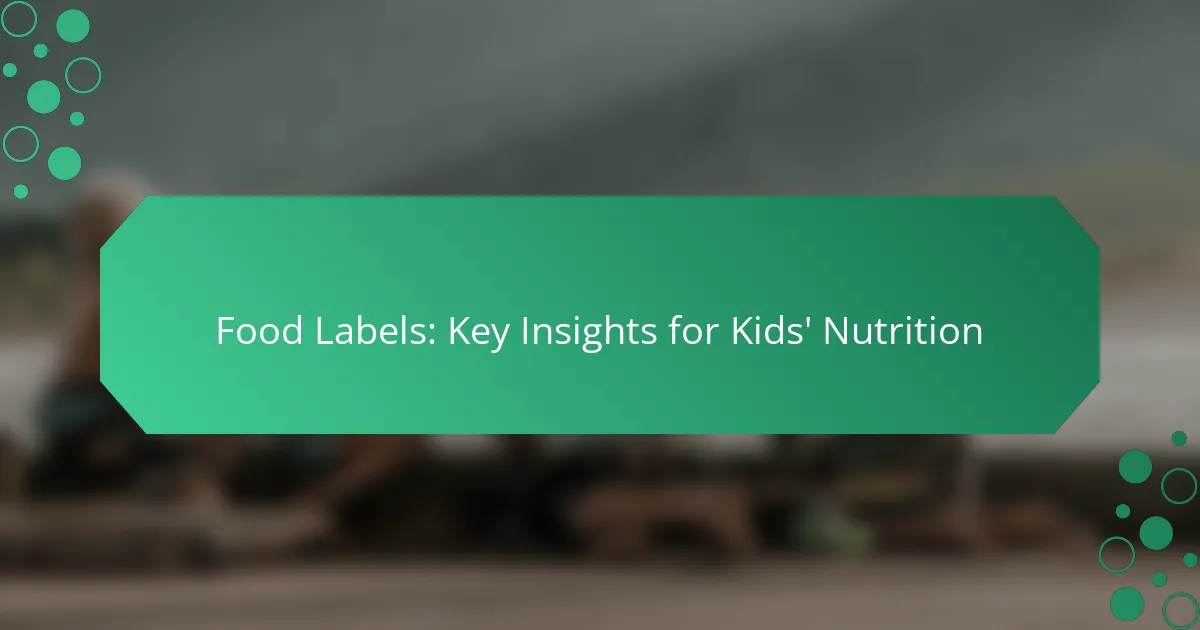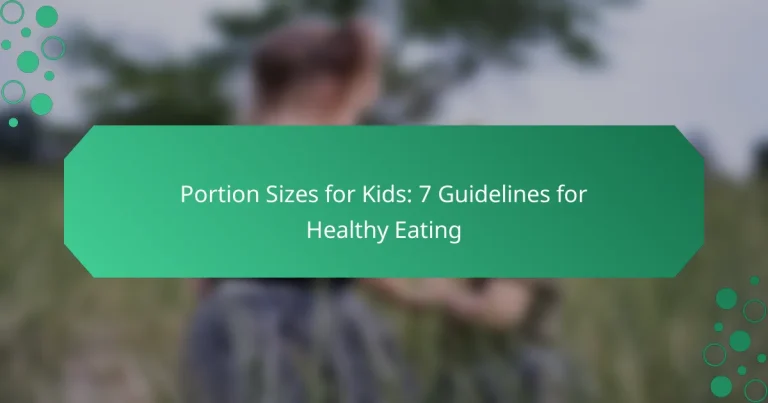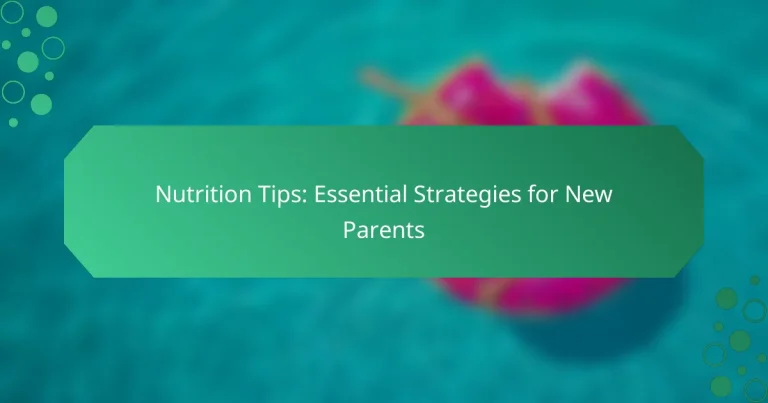Food Labels: Key Insights for Kids’ Nutrition
Food labels are vital tools for improving kids’ nutrition by offering important details about the ingredients and nutritional value of packaged foods. By learning to read these labels, parents and caregivers can make better dietary choices that support healthier eating habits for children.
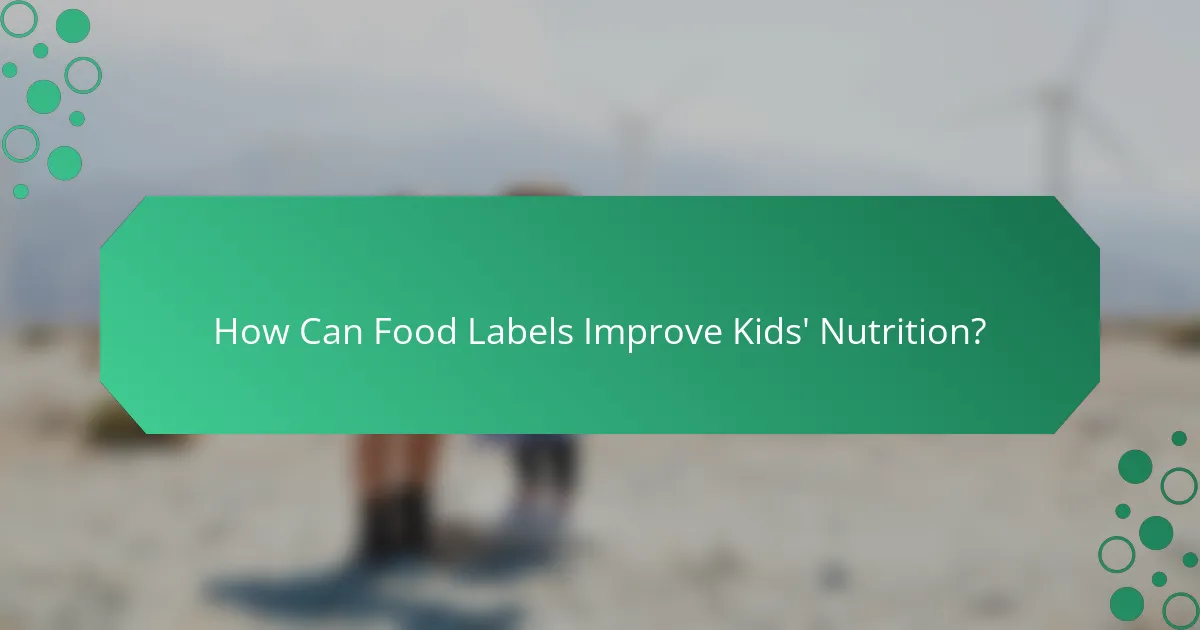
How Can Food Labels Improve Kids’ Nutrition?
Food labels play a crucial role in enhancing kids’ nutrition by providing essential information about the contents of packaged foods. By understanding these labels, parents and caregivers can make informed choices that promote healthier eating habits for children.
Understanding nutritional information
Nutritional information on food labels includes details about calories, fats, carbohydrates, proteins, vitamins, and minerals. This information helps parents assess whether a food item meets their child’s dietary needs. For instance, a snack with lower calories and higher fiber can be a better choice for kids.
Look for the % Daily Value (%DV) on labels, which indicates how much a nutrient contributes to a daily diet based on a 2,000-calorie intake. This can guide parents in selecting foods that provide essential nutrients without excessive calories.
Identifying healthy ingredients
Healthy ingredients are those that contribute positively to a child’s diet, such as whole grains, fruits, and vegetables. When reading labels, prioritize items with recognizable ingredients and minimal additives. For example, a cereal with whole grain oats and dried fruit is usually a better option than one with artificial flavors and high fructose corn syrup.
Be cautious of terms like “natural” or “organic,” as they can be misleading. Always check the ingredient list to ensure that the first few items are nutritious and beneficial for kids.
Recognizing added sugars
Added sugars can significantly impact children’s health, contributing to obesity and dental issues. Food labels now include a separate line for added sugars, making it easier to identify how much sugar has been included beyond what is naturally present. Aim for products with low or no added sugars.
As a guideline, the American Heart Association recommends that children consume no more than 25 grams of added sugar per day. Checking labels can help parents keep track of sugar intake from various sources.
Evaluating portion sizes
Portion sizes on food labels indicate how much of the product is considered one serving. Understanding these sizes is vital for managing calorie intake and ensuring kids receive appropriate nutrition. For example, a snack labeled as having 150 calories per serving may contain multiple servings in a single package.
To make informed choices, compare the serving size to the amount you plan to serve. If a snack is packaged in a large bag, it may be easy to consume more than one serving, leading to higher calorie intake than intended.
Choosing whole foods
Whole foods, such as fresh fruits, vegetables, nuts, and whole grains, are typically more nutritious than processed options. When shopping, prioritize items that are minimally processed and have fewer ingredients. For instance, choosing fresh apples over apple-flavored snacks can provide more vitamins and fiber.
Encourage kids to eat a variety of whole foods to ensure they receive a balanced diet. Incorporating these foods into meals and snacks can help establish healthy eating habits that last a lifetime.
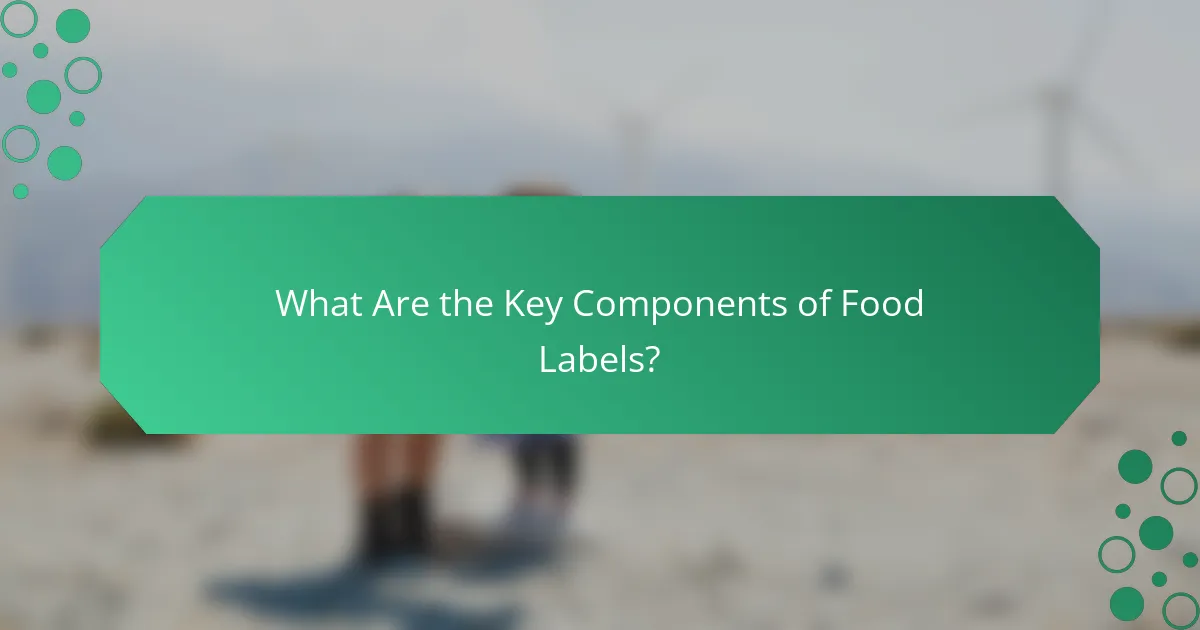
What Are the Key Components of Food Labels?
Food labels provide essential information about the nutritional value and ingredients of a product, helping consumers make informed choices. Key components include the nutritional facts panel, ingredient list, allergen information, and serving sizes.
Nutritional facts panel
The nutritional facts panel offers a breakdown of the key nutrients in a food product, such as calories, fats, carbohydrates, proteins, and vitamins. This information is typically presented per serving, allowing you to assess how a food fits into your daily diet.
When reviewing the panel, pay attention to the percentage of daily values (%DV) for nutrients like fiber and sugars. A %DV of 5% or less is considered low, while 20% or more is high, helping you gauge nutritional quality.
Ingredient list
The ingredient list details all components used in the product, listed in descending order by weight. This means the first few ingredients are the most prevalent, giving insight into the food’s main components.
Look for whole foods like fruits, vegetables, and grains at the top of the list. Avoid products with long lists of artificial additives or preservatives, as these can indicate lower nutritional quality.
Allergen information
Allergen information identifies common allergens that may be present in the food, such as peanuts, tree nuts, dairy, eggs, soy, wheat, fish, and shellfish. This section is crucial for individuals with food allergies or sensitivities.
In the U.S., food labels must clearly state if a product contains any of the major allergens, often highlighted in bold. Always check this section to ensure safety for children with known allergies.
Serving sizes
Serving sizes indicate the amount of food that is typically consumed in one sitting and are used as a reference for the nutritional facts. Understanding serving sizes helps gauge how much of the product you are actually eating.
Be mindful that serving sizes can differ significantly between products. For example, a snack may list a serving as 30 grams, while a beverage may be 240 milliliters. Adjust your intake accordingly to meet your dietary needs.
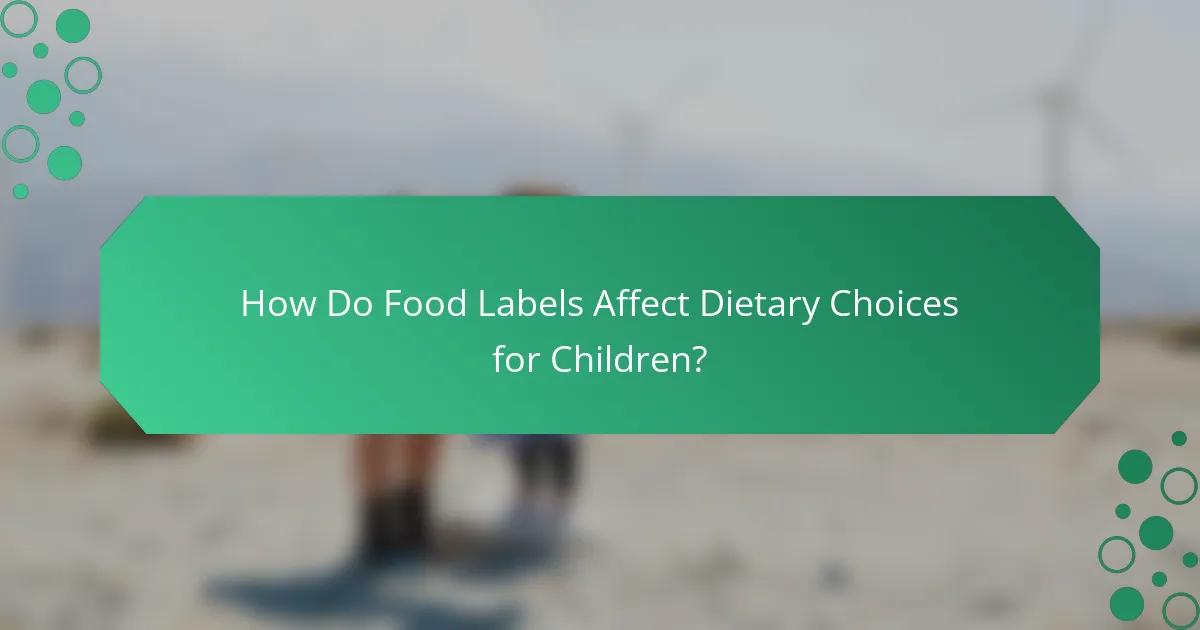
How Do Food Labels Affect Dietary Choices for Children?
Food labels play a crucial role in shaping dietary choices for children by providing essential information about nutritional content and ingredients. Parents and caregivers often rely on these labels to make informed decisions that promote healthier eating habits for their kids.
Influencing parental decisions
Food labels significantly influence parental decisions by highlighting key nutritional information such as calories, sugars, and fats. Parents are more likely to choose products that display lower sugar content or higher fiber levels, which can lead to healthier food selections for their children.
For instance, a cereal with a clear label indicating whole grains and low sugar may attract parents looking for nutritious breakfast options. This conscious choice can help establish better eating patterns from an early age.
Encouraging healthier eating habits
Food labels encourage healthier eating habits by making nutritional information accessible and understandable. When children see their parents reading labels, they may become more curious about what they eat and develop a sense of responsibility regarding their food choices.
Simple strategies, such as choosing snacks with fewer than 5 grams of sugar per serving or opting for items with recognizable ingredients, can foster a habit of selecting healthier options. Parents can involve children in label reading to enhance their understanding of nutrition.
Promoting awareness of food quality
Food labels promote awareness of food quality by detailing ingredients and nutritional values, helping families make better choices. Labels that highlight organic or non-GMO certifications can guide parents towards higher-quality products that align with their values.
Additionally, understanding terms like “whole grain” versus “refined” can empower parents to select more nutritious foods. Encouraging children to recognize these differences can instill lifelong habits of prioritizing food quality over mere convenience.

What Are Common Misconceptions About Food Labels?
Many people misunderstand food labels, leading to confusion about what is truly healthy. Common misconceptions include overvaluing terms like ‘natural’ and ‘low-fat’ without recognizing their actual implications for nutrition.
Understanding ‘natural’ claims
The term ‘natural’ on food labels can be misleading, as there is no strict regulatory definition in many countries, including the United States. This means products labeled as ‘natural’ may still contain artificial ingredients or preservatives.
When evaluating ‘natural’ claims, look for additional certifications or ingredient lists. A product may be labeled ‘natural’ but still contain high levels of sugar or unhealthy fats. Always check the nutrition facts for a clearer picture.
Interpreting ‘organic’ labels
‘Organic’ labels indicate that a product meets specific agricultural standards, which can vary by country. In the U.S., for example, organic foods must be grown without synthetic pesticides or fertilizers and adhere to strict guidelines.
To ensure you’re buying truly organic products, look for the USDA Organic seal. This certification guarantees that at least 95% of the ingredients are organic. However, be aware that organic does not always mean healthier; some organic snacks can still be high in calories and sugar.
Debunking low-fat myths
Many consumers believe that low-fat foods are automatically healthier, but this is not always the case. Often, manufacturers compensate for reduced fat with added sugars or artificial ingredients, which can negate health benefits.
When choosing low-fat options, read the nutrition label carefully. A product may be low in fat but high in calories or sugars. Instead of focusing solely on fat content, consider the overall nutritional profile and ingredients to make healthier choices.
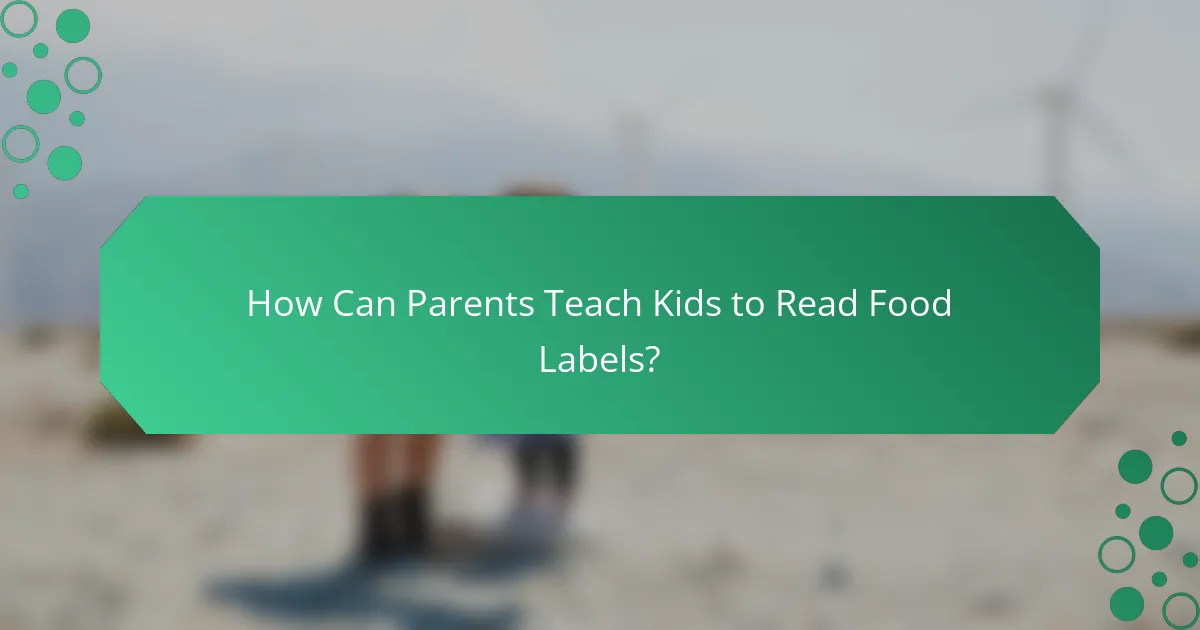
How Can Parents Teach Kids to Read Food Labels?
Parents can teach kids to read food labels by making the process interactive and enjoyable. Engaging children in understanding nutritional information helps them make healthier choices and fosters lifelong habits.
Engaging in grocery shopping
Involve kids in grocery shopping to familiarize them with food labels. Allow them to pick items and read the labels, discussing what the different sections mean, such as serving size, calories, and nutrients. This hands-on experience makes learning practical and relevant.
Encourage them to compare similar products by looking at their labels. For instance, ask them to find a cereal with lower sugar content or higher fiber. This not only teaches label reading but also critical thinking about food choices.
Using fun label-reading activities
Create fun activities around food labels to keep kids engaged. For example, turn label reading into a game where they earn points for identifying healthy ingredients or low-calorie options. This gamification can make learning enjoyable and memorable.
Another idea is to create a scavenger hunt in the grocery store where kids must find items that meet specific nutritional criteria. This encourages them to actively seek out healthier options while reinforcing their label-reading skills.
Setting examples at home
Set a positive example by reading food labels during meal preparation at home. Discuss the nutritional value of the foods you choose and why certain ingredients are beneficial. This modeling helps children understand the importance of making informed choices.
Incorporate label reading into family meals by discussing what everyone is eating. Ask questions like, “What do you think about the amount of sugar in this snack?” This encourages open dialogue and critical thinking about food choices in a supportive environment.
